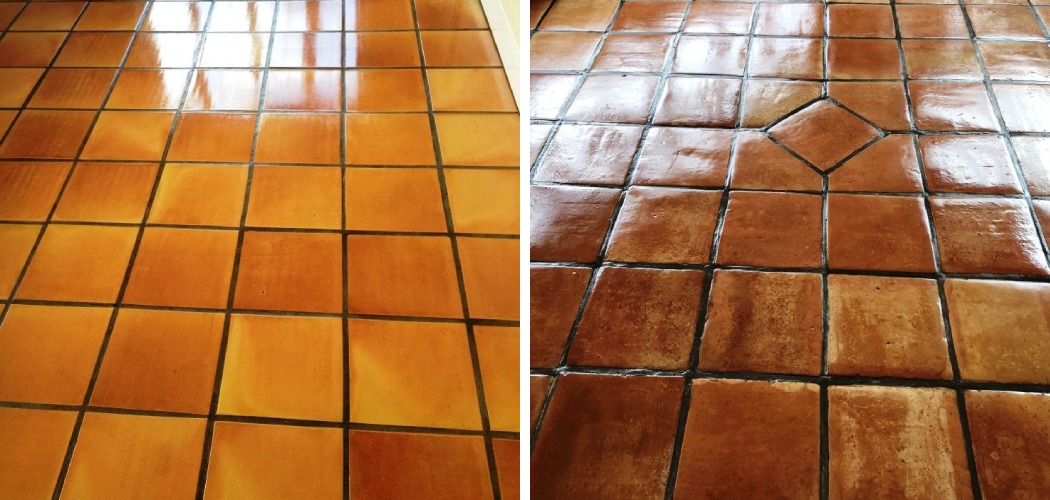Terracotta floors exude timeless charm and warmth, but maintaining their original beauty requires regular care and attention. To preserve the earthy allure of your terracotta flooring, it’s essential to master the art of cleaning. In this comprehensive guide, we will explore the intricate steps on “How to Clean Terracotta Floors,” offering insights into effective cleaning solutions, preventative measures, and techniques to enhance their longevity.
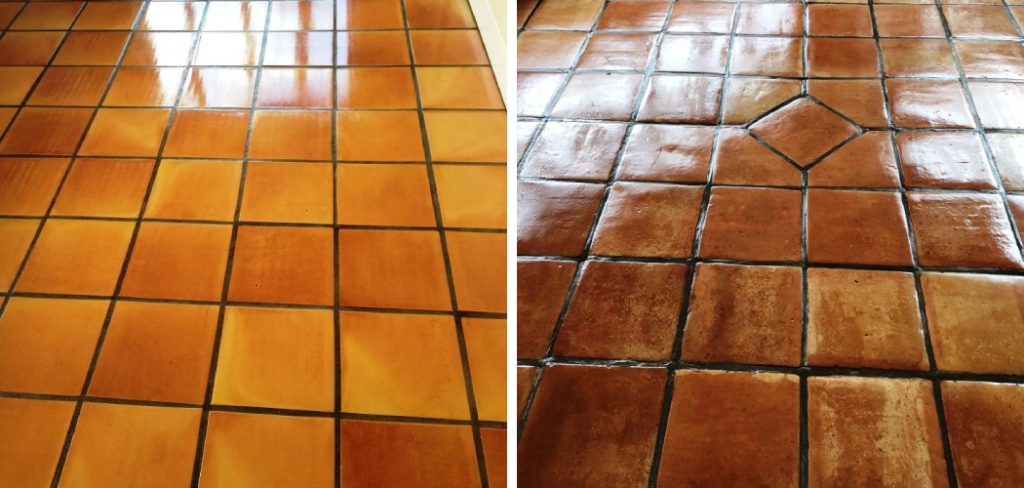
From tackling stubborn stains to preventing moisture damage, this guide is tailored to empower homeowners and enthusiasts with the knowledge needed to achieve spotless terracotta surfaces. Whether you’re a seasoned caretaker of terracotta or a newcomer to its rustic elegance, these methods will guide you through the process of maintaining pristine floors that radiate the timeless beauty of this classic material. Let’s dive into the world of terracotta care, ensuring your floors remain a testament to both durability and aesthetic appeal.
Characteristics of Terracotta Flooring
Terracotta, Italian for “baked earth,” possesses unique characteristics that distinguish it from other flooring materials, making it a preferred choice for those seeking warmth and a natural feel in their living spaces. Its rich, earthy tones, ranging from deep reds to muted oranges, create a warm and inviting ambiance, complementing various interior design styles. Terracotta tiles are known for their durability and longevity, able to withstand the test of time if properly maintained.
Furthermore, the porous nature of terracotta allows it to maintain a comfortable room temperature, keeping spaces cooler in the summer and warmer in the winter. However, this porosity also makes it susceptible to moisture and stain absorption, emphasizing the need for regular sealing and meticulous care. Understanding these properties is crucial for anyone looking to preserve the beauty and functionality of terracotta flooring.
Importance of Cleaning and Maintenance
Regular cleaning and maintenance of terracotta floors are critical for several reasons. Firstly, due to their porous nature, terracotta tiles can absorb liquids easily, which, if left unattended, could lead to the development of stains that mar the surface’s appearance. Secondly, without proper sealing and care, terracotta floors can become a harbor for mold and mildew, especially in areas exposed to moisture, such as bathrooms and kitchens.
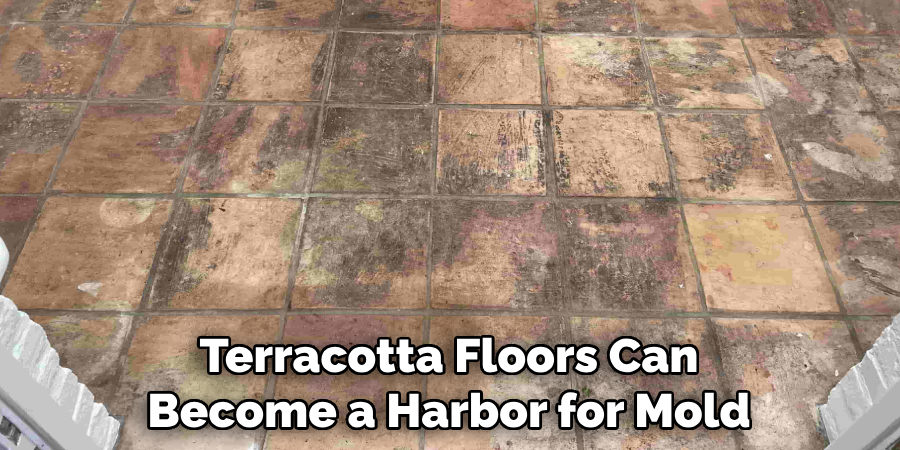
This not only affects the aesthetic appeal of the floors but can also pose health risks to the occupants of the space. Additionally, regular maintenance ensures the longevity and durability of the flooring, allowing it to retain its natural beauty and character over the years. Effective cleaning routines and preventive measures, therefore, not only contribute to the visual appeal of terracotta floors but also enhance their functionality and lifespan, ensuring they remain an elegant feature of any home.
Terracotta Floor Composition
The composition of terracotta flooring is simple yet fascinating, rooted in the natural elements of the earth. Terracotta is made from clay that is molded into shape and then fired in a kiln at high temperatures until it hardens. This traditional process dates back thousands of years, showcasing the material’s enduring appeal and versatility. The type of clay, the heat at which it is fired, and the duration of firing all contribute to the color, density, and texture of the terracotta tiles.
Typically, the clay used for terracotta floors is rich in iron, which imparts the distinct, warm red and orange hues that terracotta is renowned for. The firing process not only solidifies the clay but also imbues the tiles with their characteristic durability and strength, making them suitable for flooring applications. However, this process also preserves the clay’s natural porosity, making the tiles susceptible to water and stain absorption. Understanding the composition of terracotta is crucial for effective cleaning and maintenance, as it directly influences how these floors interact with their environment and the care they require.
Impact of Sealing on Terracotta’s Durability
Sealing terracotta floors is a critical step in enhancing their durability and preserving their natural beauty. Given the material’s inherent porosity, sealing effectively acts as a barrier that minimizes water and stain absorption, significantly reducing the risk of damage and discoloration over time. A quality sealant can also protect the terracotta tiles from everyday wear and tear, extending their lifespan and maintaining their aesthetic appeal.
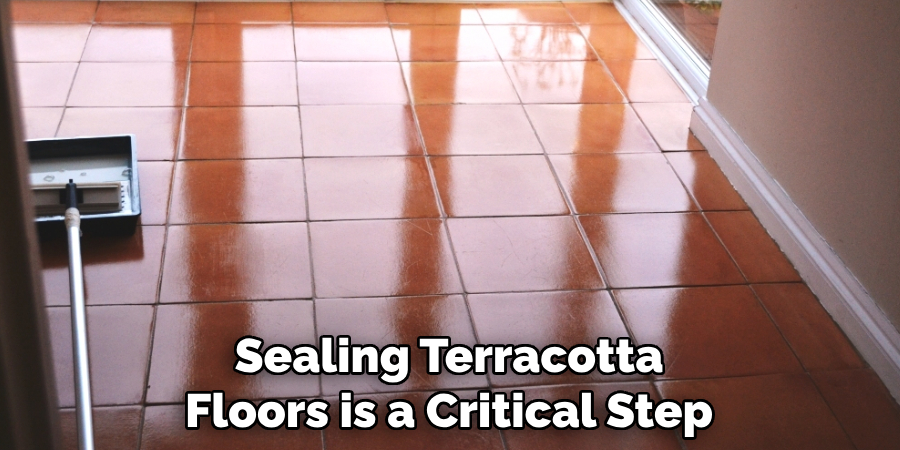
Additionally, the process of sealing terracotta floors can simplify maintenance routines, as it prevents dirt and spills from penetrating deeply into the tiles, making regular cleaning more effective and less labor-intensive. However, it’s essential to choose the right type of sealant that complements the unique characteristics of terracotta, as well as to adhere to a recommended resealing schedule, to ensure the floors remain protected against external factors and continue to serve as a durable foundation in any home.
10 Methods How to Clean Terracotta Floors
1. Regular Sweeping and Dusting:
The first step in maintaining clean terracotta floors is regular sweeping or dusting to remove loose dirt and debris. Use a soft broom or a vacuum cleaner with a soft brush attachment to prevent scratching the surface.
It is recommended to sweep or dust at least once a week, or more frequently in high traffic areas. This will prevent dirt and dust from building up and getting ground into the floor, which can cause damage over time. Though it may seem like a simple task, regular sweeping and dusting is crucial in keeping your terracotta floors looking clean and beautiful.
2. Gentle Mopping with Warm Water:
Terracotta is sensitive to harsh chemicals, so start by mopping the floor with warm water. Dampen a soft mop and clean the surface, ensuring that excess water doesn’t sit on the tiles for too long. This gentle cleaning method is perfect for removing everyday dirt and grime without damaging the terracotta tiles.
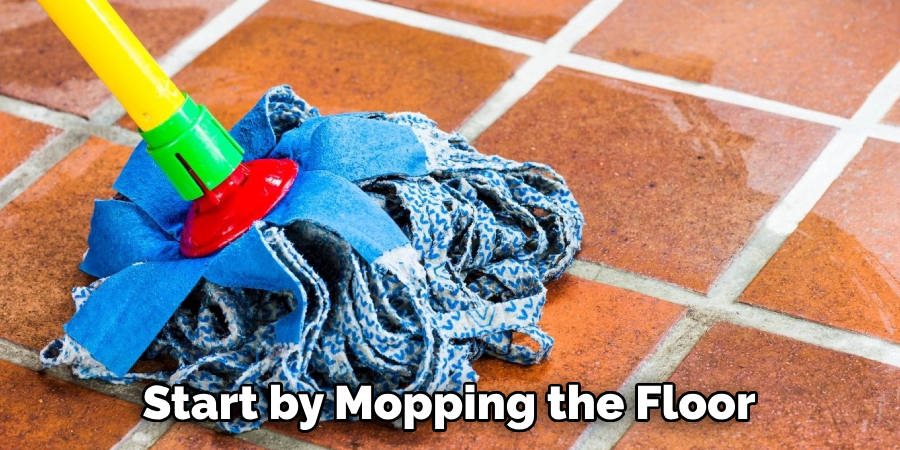
Once you have mopped the floor, use a clean towel to dry any remaining water droplets. Avoid using abrasive tools or scouring pads as they can scratch the surface of the tiles. Instead, opt for a soft cloth or sponge to gently wipe away stubborn stains.
3. pH-Neutral Cleaner for Stains:
For stubborn stains on terracotta floors, use a pH-neutral cleaner specifically designed for clay tiles. Avoid acidic or abrasive cleaners, as they can damage the surface. Apply the cleaner according to the manufacturer’s instructions and rinse thoroughly. You can also use a soft-bristled brush or microfiber cloth to gently scrub the stain before rinsing.
Apart from using a pH-neutral cleaner, there are other steps you can take to prevent and remove stains on terracotta floors. Regularly sweeping and mopping with warm water can help keep your floors clean and avoid build-up of dirt or grime that could lead to stains. Additionally, using mats or rugs in high traffic areas can protect your floors from scratches and spills.
In case of accidental spills, it is important to clean them up immediately to prevent staining. Blot the spill with a clean cloth or paper towel and avoid rubbing as it can spread the stain further. If needed, you can use a mild soap solution (such as dish soap) and warm water to gently clean the spill. Rinse thoroughly and dry with a soft cloth.
4. Baking Soda Paste for Grout Cleaning:
To tackle grout stains, create a paste using baking soda and water. Apply the paste to the grout lines, scrub gently with a soft brush, and let it sit for a while before rinsing. This natural solution helps lift stains without harming the terracotta. While it may take some time for the stains to completely disappear, you should see a noticeable difference in the color of the grout.
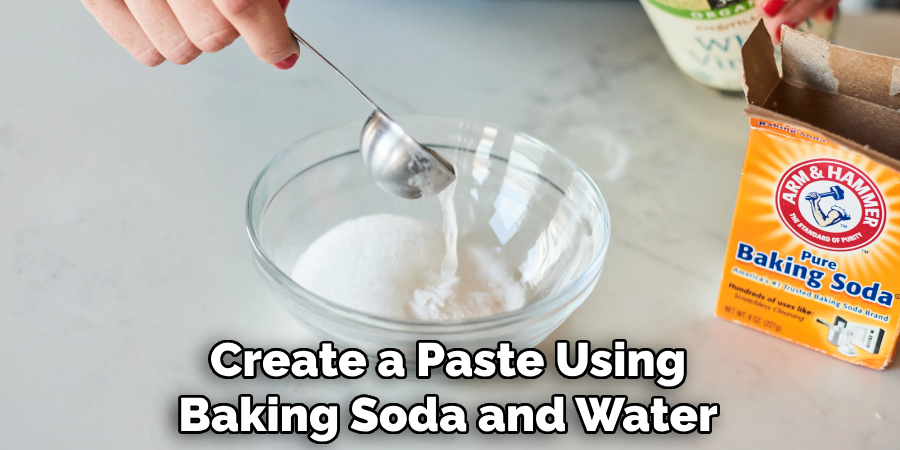
Baking soda has long been known as a versatile cleaning agent due to its mildly abrasive properties and natural bleaching abilities. When combined with water, it creates a gentle yet effective solution that can be used on various surfaces, including grout. This method is also safe to use, as baking soda is a non-toxic and eco-friendly alternative to harsh chemical cleaners.
In addition to using a baking soda paste for grout cleaning, you can also add a few drops of lemon juice or vinegar to the mixture for enhanced stain-fighting power. These acidic ingredients help break down tough stains and leave your grout looking bright and clean.
5. Avoid Harsh Chemicals:
Steer clear of harsh chemicals, such as bleach or ammonia, as they can damage the terracotta’s finish and alter its color. Opt for mild, pH-neutral cleaners to ensure a gentle yet effective cleaning process. Additionally, avoid using any abrasive tools or scrubbing too vigorously, as this can also cause damage to the terracotta.
Chemicals like bleach and ammonia are commonly found in household cleaners but they can be detrimental to the health of your terracotta possessions. These harsh chemicals can not only harm the finish and color of your terracotta, but they can also release harmful fumes into the air. Instead, opt for gentler and more natural cleaning solutions that are safe for both your terracotta and your overall well-being.
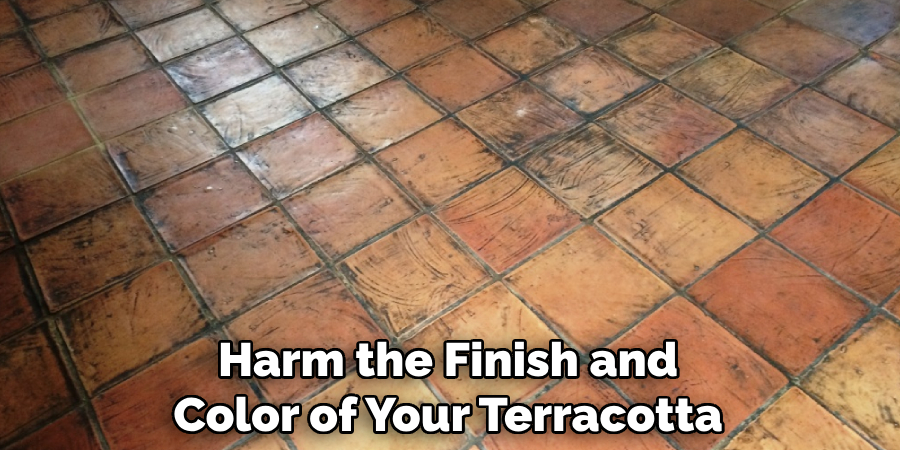
It is important to note that some acidic or alkaline cleaners may also cause damage to terracotta, as they can alter its pH balance. This can lead to discoloration or even weakening of the material over time. When choosing a cleaner, make sure to look for pH-neutral options that are specifically designed for use on terracotta.
6. Sealing for Protection:
Terracotta is porous, making it prone to stains and water damage. Apply a penetrating sealer designed for terracotta to create a protective barrier. Regularly reapply the sealer according to the manufacturer’s recommendations.
Sealing your terracotta is an important step in protecting and preserving it for years to come. In addition to preventing stains and water damage, sealing can also enhance the appearance of your terracotta by deepening its color and giving it a subtle sheen.
When choosing a sealer for your terracotta, make sure to select one specifically designed for use on this type of material. Look for a penetrating sealer, which will soak into the pores of the terracotta to create a protective barrier without altering its natural appearance.
7. Vinegar Solution for Algae or Mold:
If your terracotta floors are exposed to moisture and develop algae or mold, mix a solution of white vinegar and water. Apply the solution, let it sit for some time, then scrub and rinse. Ensure the area is well-ventilated during this process. Repeat if necessary.
The acidic properties of vinegar make it an effective natural solution for killing and preventing the growth of algae or mold on terracotta floors. It is also a safe alternative to harsh chemicals, making it an eco-friendly option for cleaning.
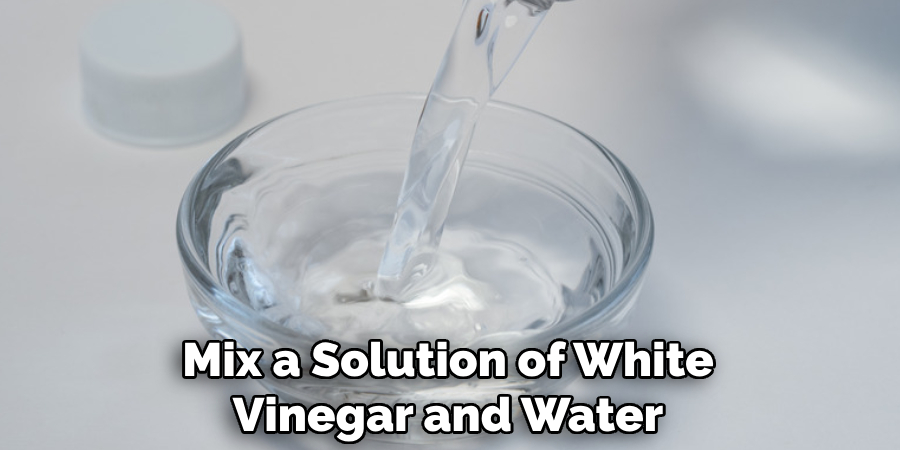
In addition to its anti-fungal properties, vinegar can also be used to remove stubborn stains on terracotta floors. Simply mix equal parts of vinegar and water, apply the solution to the stained area, let it sit for a few minutes, then scrub and rinse. This method is particularly effective for removing oil or grease stains.
8. Avoid Excessive Water:
Terracotta can absorb water, leading to potential damage. Limit the use of excessive water during cleaning, and promptly wipe up spills to prevent them from seeping into the tiles. To remove tough stains, use a damp cloth and mild soap. Avoid using abrasive materials or chemical cleaners that can strip away the glaze on the terracotta surface.
Water is known for being one of the biggest enemies of terracotta tiles. As mentioned earlier, excessive water can cause damage to these porous tiles. But it’s not just during cleaning that you need to be careful with water. You also need to keep an eye out for spills and leaks that can seep into your terracotta surface. Make sure to promptly wipe up any spills to prevent them from causing lasting damage.
To clean your terracotta tiles, you can use a damp cloth and mild soap. This will help remove everyday dirt and grime without causing any harm to the tiles. However, for tougher stains, be careful not to use abrasive materials or chemical cleaners as they can strip away the glaze on the terracotta surface. This glaze is what gives terracotta its beautiful shine and protects it from water damage, so it’s important to preserve it.
9. Soft Brush for Tough Stains:
For tough stains, use a soft brush or an old toothbrush to gently scrub the affected area. Avoid abrasive brushes or scouring pads that can scratch the terracotta surface. Instead, opt for a soft-bristled brush or sponge that can effectively remove stains without causing damage.
Some tough stains that may require this method include oil, grease, or food spills. To begin, mix equal parts of white vinegar and water in a spray bottle. Spray the solution onto the stain and let it sit for a few minutes before gently scrubbing with the soft brush.
For especially stubborn stains, you can also try using a mixture of baking soda and water. This natural cleaner is gentle yet effective at removing tough stains without causing harm to the terracotta surface.
10. Preventive Measures:
Implement preventive measures to protect your terracotta floors. Use doormats at entrances to reduce dirt, place felt pads under furniture to prevent scratches, and trim pet nails regularly to avoid scratches. Also, avoid using harsh chemicals and cleaners on the floors as they can damage the protective sealant. Instead, use a damp mop with mild soap or vinegar to clean the floors.
Regular maintenance is also essential in preventing long-term damage to your terracotta floors. Sweep or vacuum regularly to remove dust and debris, which can cause scratches when walked on. Spills should also be cleaned immediately to prevent staining. Additionally, consider resealing your floors every 1-2 years to maintain their protective coating and keep them looking new.

The upkeep of terracotta floors is crucial in preserving their beauty and longevity. By implementing preventive measures, you can ensure that your floors remain damage-free for years to come. And if any damage does occur, address it promptly to prevent further deterioration. Proper care and maintenance will not only protect your investment, but also enhance the overall look and feel of your home.
In addition to preventive measures, consider using area rugs or mats in high-traffic areas to reduce wear and tear on your terracotta floors.
Conclusion
In conclusion, maintaining terracotta floors requires a combination of gentle cleaning techniques, regular maintenance, and occasional sealing. By understanding the unique composition and characteristics of terracotta, homeowners can effectively preserve its natural beauty and durability. Through simple yet essential steps like sweeping, mopping with a mild detergent solution, and addressing stains promptly, terracotta floors can retain their luster and charm for years to come.
Additionally, the option of sealing provides an added layer of protection against stains and moisture infiltration, enhancing the longevity of the flooring. While regular upkeep is essential, periodic professional cleaning and restoration services can rejuvenate heavily soiled or damaged terracotta floors effectively. Hopefully, this article gave you some helpful tips about how to clean terracotta floors successfully, so now that you have the proper knowledge on how to get the job done, why not give it a try today?
